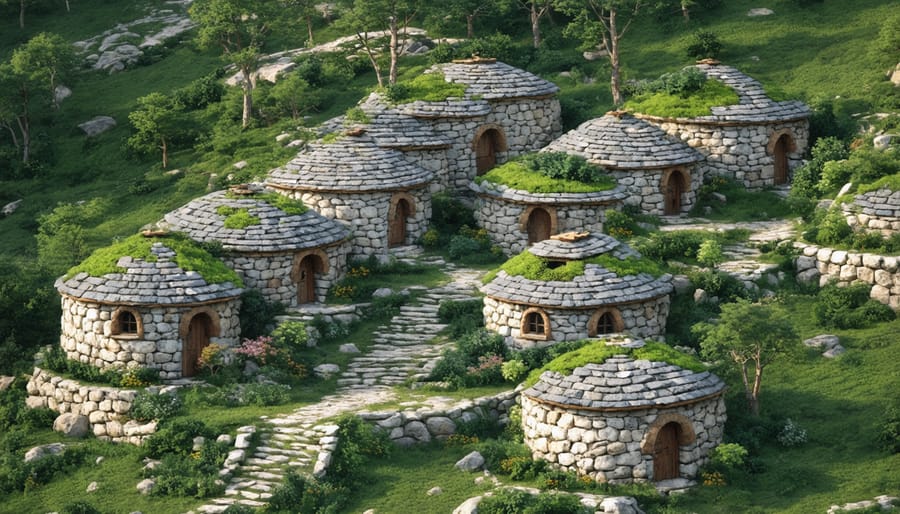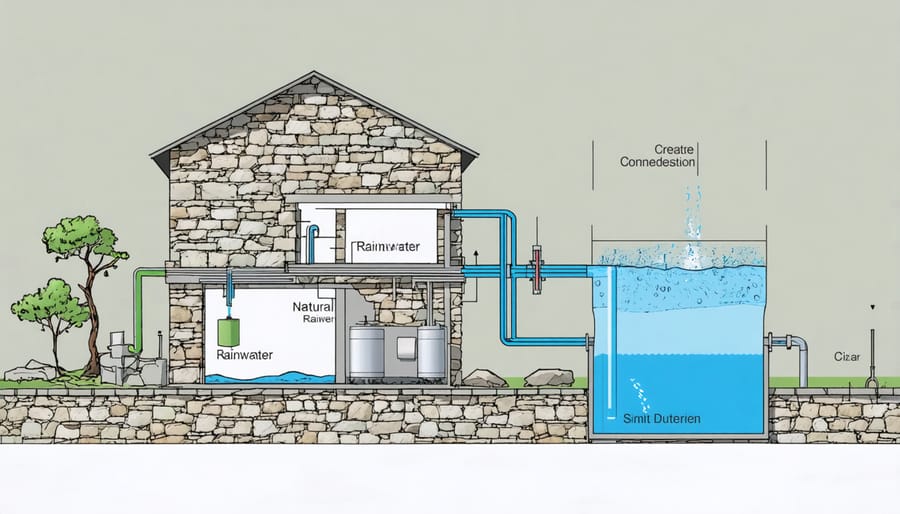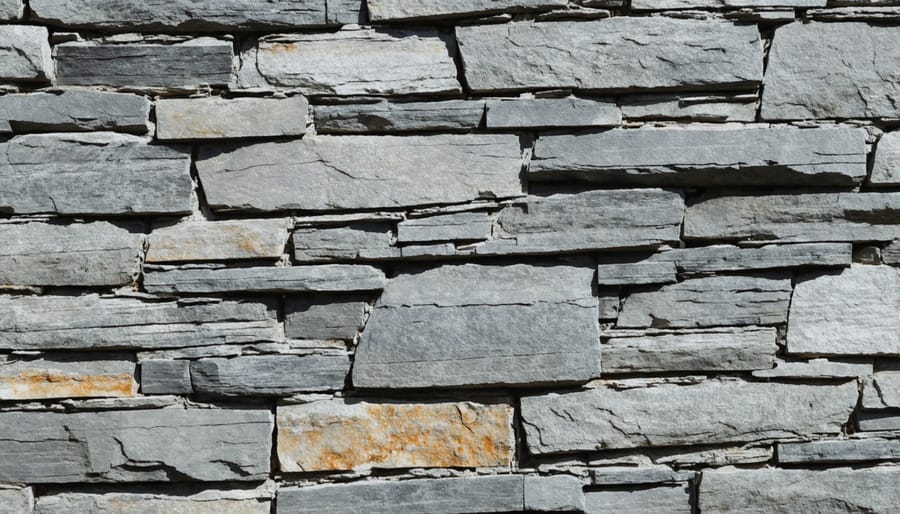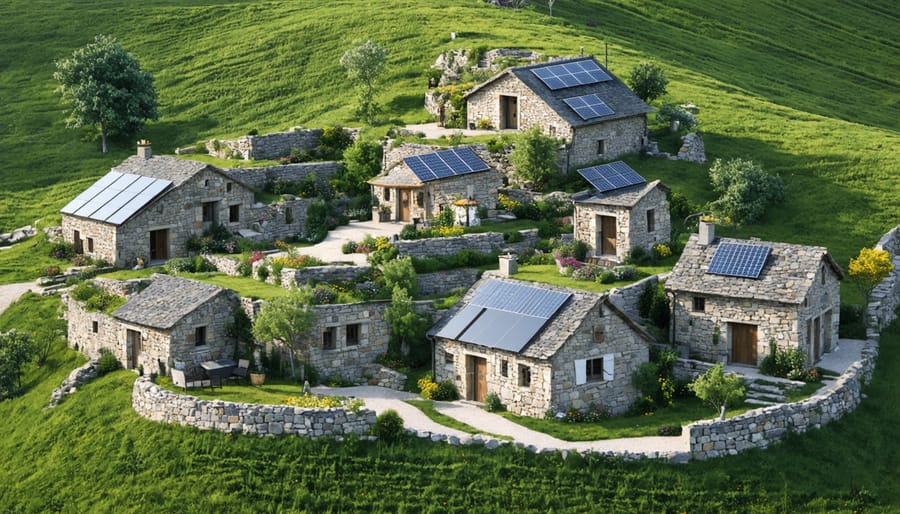Nestled among rolling hills and powered entirely by renewable energy, sustainable villages represent the future of harmonious community living. These thoughtfully designed settlements seamlessly integrate cutting-edge environmental technologies with traditional wisdom, creating self-sufficient ecosystems where residents thrive in balance with nature.
Picture solar panels gleaming alongside community gardens, rainwater harvesting systems feeding into natural pools, and homes built from locally-sourced materials that blend perfectly with the landscape. These villages aren’t just environmentally conscious developments – they’re living laboratories demonstrating how communities can reduce their carbon footprint while enhancing quality of life.
From passive solar design and zero-waste systems to regenerative agriculture and shared community spaces, sustainable villages showcase practical solutions to global challenges. They prove that luxury and sustainability aren’t mutually exclusive – rather, they complement each other in creating spaces that are both beautiful and environmentally responsible.
As climate change reshapes our world, these innovative communities offer a blueprint for resilient, future-proof living. They demonstrate how thoughtful design, renewable resources, and collective action can create thriving communities that nurture both people and planet, setting a new standard for sustainable development in the 21st century.
The Marriage of Sustainability and Luxury in Stone Architecture
Environmental Benefits of Reclaimed Stone
Incorporating reclaimed stone into sustainable village development offers significant environmental advantages. By reusing existing stone materials, communities can reduce their carbon footprint by up to 80% compared to using newly quarried stone. This dramatic reduction comes from eliminating the energy-intensive processes of extraction, cutting, and transportation of new stone.
Reclaimed stone also helps preserve natural landscapes by decreasing the demand for virgin materials. Each ton of reused stone prevents approximately 1.5 tons of quarry waste and conserves valuable mineral resources for future generations. The durability of stone means these materials can be repurposed multiple times over centuries, creating a truly circular building material.
Water conservation is another key benefit, as reclaimed stone eliminates the substantial water usage required in quarrying operations. Traditional stone extraction can consume up to 500 gallons of water per ton of stone produced. Additionally, reusing stone materials helps maintain local biodiversity by reducing the need for new quarry sites, which often disrupt natural habitats and ecosystems.
The thermal mass properties of stone remain intact when reclaimed, continuing to provide natural temperature regulation and reducing energy needs for heating and cooling.
The Timeless Appeal of Aged Stone
The character and charm of aged stone tell a story that new materials simply cannot match. In sustainable village design, reclaimed stone serves as both a testament to architectural heritage and a cornerstone of environmental responsibility. These weathered surfaces, with their subtle patinas and worn edges, bring an authenticity that resonates deeply with our desire for connection to the past.
Each piece of reclaimed stone carries unique patterns and textures formed over decades or even centuries of exposure to the elements. When incorporated into modern structures, these materials create a fascinating dialogue between old and new, adding depth and sophistication to natural stone aesthetics that cannot be replicated with manufactured products.
Beyond their visual appeal, aged stones often exhibit superior durability, having already proven their resilience through years of service. Their varied coloration and natural weathering patterns create organic focal points in both interior and exterior applications, while their thermal mass properties contribute to building efficiency. This combination of beauty and functionality makes reclaimed stone an invaluable resource in creating sustainable spaces that feel timeless and grounded.

Core Elements of a Sustainable Stone Village
Thoughtful Material Integration
In our sustainable village, reclaimed stone serves as both a testament to environmental stewardship and architectural authenticity. Local quarries and demolition sites are carefully surveyed to source high-quality stone materials that would otherwise go to waste. Each piece is meticulously documented, cataloged, and assessed for structural integrity before being incorporated into new construction projects.
The integration process begins with skilled stonemasons who clean and prepare the reclaimed materials, removing old mortar and damaged sections while preserving the stone’s natural patina and character. These artisans employ traditional techniques alongside modern sustainable practices to ensure the stone’s longevity in its new application.
Our village prioritizes stone from within a 50-mile radius, significantly reducing transportation emissions while supporting regional architectural heritage. The reclaimed materials find new life in various applications, from load-bearing walls and foundations to decorative features like garden walls and pathway borders.
Perhaps most importantly, the use of reclaimed stone creates a visual and historical connection between new structures and the surrounding landscape. Each piece tells a story, whether it’s granite from a century-old mill or limestone blocks from demolished farm buildings. This thoughtful approach not only reduces environmental impact but also maintains the authentic character of the region while creating buildings that will stand the test of time.
Energy-Efficient Design Principles
The sustainable village’s design harnesses natural temperature regulation through strategic implementation of thermal mass principles and biophilic design principles. Natural stone walls and flooring serve as excellent thermal mass materials, absorbing heat during the day and releasing it gradually during cooler nights, creating a natural temperature equilibrium throughout the seasons.
The village’s buildings incorporate thick stone walls that provide substantial thermal inertia, reducing the need for artificial heating and cooling systems. This passive temperature control strategy is particularly effective in maintaining comfortable indoor temperatures while minimizing energy consumption. During summer months, the stone’s thermal properties help keep interiors cool, while in winter, the stored solar heat contributes to warming the space.
Strategic placement of windows and ventilation systems works in harmony with the thermal mass properties, creating natural airflow patterns that enhance the overall temperature regulation effect. South-facing stone walls capture maximum solar gain in winter, while carefully positioned overhangs provide shade during summer months.
The integration of green roofs and living walls complements the thermal mass benefits, providing additional insulation while supporting local biodiversity. This comprehensive approach to energy-efficient design demonstrates how traditional building materials and modern sustainable practices can work together to create comfortable, environmentally conscious living spaces.
Water Management Systems
The water management system in our sustainable village combines time-tested traditional methods with cutting-edge technology to maximize efficiency and minimize waste. At its core, the system employs a comprehensive rainwater harvesting network that captures precipitation from rooftops and common areas, directing it to underground storage tanks for future use.
Traditional elements include strategically placed bioswales and rain gardens that naturally filter stormwater while creating beautiful landscape features. These are complemented by permeable stone pathways that allow water to penetrate the ground naturally, reducing runoff and replenishing groundwater supplies.
Modern innovations include smart meters that monitor water usage in real-time, helping residents track and optimize their consumption. A state-of-the-art greywater recycling system treats and repurposes water from sinks, showers, and washing machines for irrigation and toilet flushing, reducing freshwater demand by up to 50%.
The village’s constructed wetlands serve dual purposes: naturally treating wastewater while creating vibrant ecosystems that support local wildlife. Advanced drip irrigation systems, coupled with moisture sensors, ensure precise water delivery to community gardens and green spaces, eliminating waste through over-watering.
This integrated approach not only conserves water but also creates a self-sustaining system that’s resilient to drought conditions while maintaining the aesthetic appeal of the village landscape. Regular maintenance and monitoring ensure optimal performance of all components, while educational programs help residents understand and participate in water conservation efforts.

Implementation and Maintenance
Construction Techniques
Modern construction techniques for working with reclaimed stone blend traditional craftsmanship with innovative technologies. Skilled masons now employ laser scanning and 3D modeling to precisely map and catalog salvaged stones, ensuring optimal placement and structural integrity. This digital approach allows for efficient planning while maintaining the authentic character of the materials.
Specialized cleaning methods, such as gentle pressure washing and eco-friendly chemical treatments, help preserve the patina and historical value of reclaimed stones without compromising their structural integrity. Advanced mortaring techniques, incorporating sustainable binding agents, create durable bonds while allowing the stonework to breathe naturally.
Contractors utilize mobile crushing and screening equipment on-site to process smaller stone fragments into useful aggregate, minimizing waste and transportation costs. This approach creates beautiful textural stone combinations while maximizing resource efficiency.
Modern lifting and placement equipment, equipped with soft-grip attachments, enables precise handling of delicate historical stones. Computer-aided design systems help architects and builders create detailed assembly plans that respect traditional building patterns while meeting contemporary structural requirements.
Water management systems are integrated during construction, incorporating traditional drainage techniques with modern moisture barriers. This hybrid approach ensures the longevity of reclaimed stone structures while maintaining their historical integrity and environmental performance. Careful documentation throughout the construction process helps preserve knowledge for future maintenance and restoration work.

Long-term Care and Preservation
The long-term success of a sustainable village hinges on robust maintenance practices and preservation strategies. Regular monitoring of infrastructure, buildings, and natural systems ensures early detection of potential issues and prevents costly repairs. Communities typically establish a dedicated maintenance team responsible for conducting routine inspections of solar panels, water management systems, and building structures.
Preventive maintenance schedules should include quarterly assessments of renewable energy systems, monthly checks of water recycling facilities, and annual structural evaluations of buildings. Green spaces require consistent care through sustainable landscaping practices, including native plant management and soil health monitoring.
Community engagement plays a crucial role in preservation efforts. Residents participate in scheduled maintenance days, learning essential upkeep skills while fostering a sense of ownership. This collaborative approach helps distribute the workload and ensures knowledge transfer between generations.
Documentation of maintenance procedures, repair histories, and system modifications is essential for tracking the village’s evolution and planning future improvements. Digital monitoring systems help track resource consumption patterns and identify areas needing attention.
Financial sustainability is equally important for long-term care. Villages should maintain a dedicated maintenance fund, typically collecting 1-2% of property values annually for ongoing upkeep and future repairs. This ensures sufficient resources for both routine maintenance and unexpected repairs.
Environmental impact assessments should be conducted every three years to evaluate the effectiveness of sustainability measures and identify areas for improvement. This data-driven approach helps communities adapt their preservation strategies to changing environmental conditions and emerging technologies while maintaining their commitment to sustainability.
Real-World Success Stories
The sustainable village movement has produced several remarkable success stories worldwide, demonstrating the viability of eco-conscious community development. One standout example is the village of Torri Superiore in Italy, a medieval stone settlement that has been transformed into a thriving ecological community. The village’s restoration utilized traditional stone construction techniques while incorporating modern sustainable technologies, including solar power systems and natural water filtration.
In Scotland, the Findhorn Ecovillage has become a model for sustainable community living. Their innovative use of reclaimed stone from local demolition sites has created buildings that blend seamlessly with the historic landscape while achieving impressive energy efficiency. The community’s stone structures maintain comfortable temperatures year-round with minimal heating requirements, proving that traditional materials can meet contemporary environmental standards.
The village of Auroville in India presents another compelling case study. Their experimental zone features stone buildings that incorporate passive cooling techniques and rainwater harvesting systems. Local granite and limestone are used extensively, reducing transportation costs and carbon emissions while supporting regional craftspeople and maintaining traditional building practices.
BedZED (Beddington Zero Energy Development) in the United Kingdom demonstrates how stone construction can be integrated into modern eco-developments. While not exclusively stone-based, the project’s use of reclaimed materials and local stone has created a distinctive aesthetic while achieving carbon-neutral status. The development’s success has influenced sustainable building policies across Europe.
These communities have not only achieved remarkable environmental outcomes but have also created thriving social ecosystems. Residents report higher levels of satisfaction and stronger community bonds compared to conventional developments. Their success has sparked similar initiatives worldwide, proving that sustainable stone villages are not just an idealistic concept but a practical solution for future community development.
The development of sustainable stone villages represents a viable and increasingly attractive solution for modern community planning. By combining traditional building techniques with contemporary sustainability practices, these communities offer multiple benefits: reduced environmental impact, enhanced durability, and lower long-term maintenance costs. The use of reclaimed stone and local materials significantly decreases the carbon footprint while creating aesthetically pleasing structures that blend seamlessly with their surroundings. Case studies from successful implementations worldwide demonstrate that sustainable stone villages not only preserve cultural heritage but also create resilient, energy-efficient communities that can thrive for generations. As we face growing environmental challenges, these eco-conscious developments provide a practical blueprint for sustainable living that balances human needs with environmental stewardship.










